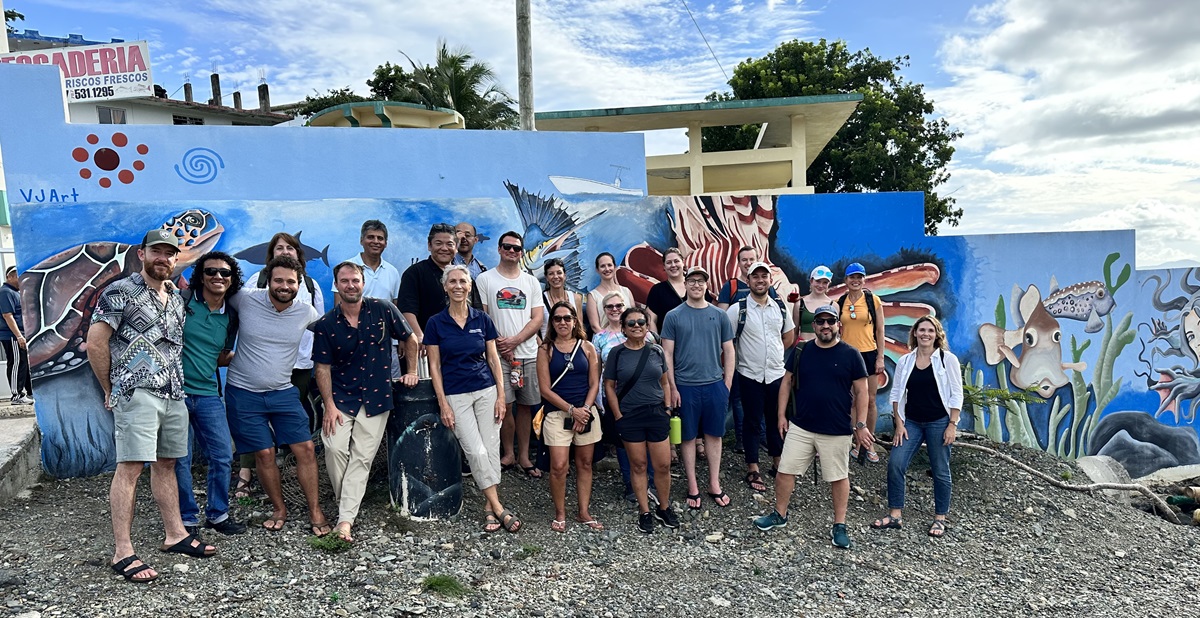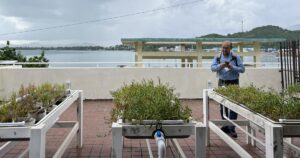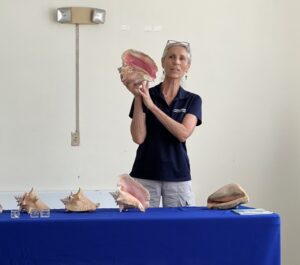Staying Connected to the Sustainable Seafood Movement
- by bonappetit

Conference attendees flank Center Director Megan Davis, Ph.D. and pose in front of a mural outside Naguabo Aquaculture Center in Puerto Rico.
Sustainable seafood purchasing has long been a core value for Bon Appétit Management Company, and in a constantly evolving landscape, there’s always something new to learn and share. That’s why Jenny Slafkosky, Bon Appétit’s communications director, joined Maisie Ganzler, chief strategy and brand officer, in San Juan, Puerto Rico at the end of October for the Conservation Alliance for Seafood Solutions (CASS) annual conference.

Sea vegetables on the rooftop of the Naguabo Aquaculture Center
CASS is a global collaborative effort among conservation organizations to protect the ocean and the people who depend on it. Formed in 2008, the Alliance has made significant strides in their effort to build synergy between ocean conservation organizations as well as to support seafood businesses to develop and implement practices that support environmentally sustainable fishing and aquaculture production. Their current goal is that by 2030, at least 75% of global seafood production is sustainable (or able to be verified as making improvements in that direction), and that social responsibility is ensured in fisheries and aquaculture, as well.
Maisie was a panelist in a session focused on the need for different tools for assurance of sustainability of small-scale fisheries and aquaculture efforts, and how some of the new tools being developed to address this issue can also aid market access. All panelists agreed that size-appropriate new processes and paradigms are needed. Existing certifications and standard forms of assurance were built for large scale fisheries and aquaculture operations with global markets. If the producer/boat size or geographic reach is smaller, the economics as well as the risks change. For institutional buyers like Bon Appétit, these are critical questions to consider.

Dr. Megan Davis explains the life cycle of queen conch.
Jenny joined a self-organized group of attendees who met outside of conference hours to discuss human rights in the global seafood industry and build on the conference’s formal discussions about how sustainable seafood stakeholders can push for more accountability in this realm. She also visited Naguabo Aquaculture Center, a hatchery and nursery for conch, the second largest fishery in the Caribbean. Conch’s population is in decline due to habitat changes and overfishing, and one of the hatchery’s goals is to help restore the native conch populations throughout the Caribbean as a source of sustainable seafood as well as a diversified source of income for fishers. The Center operates with a community-driven model, bringing together local fisherfolk, youth, and scientists to restore critical ocean resources in Puerto Rico.
While connecting with conservation and business colleagues over the course of the week, Maisie and Jenny also discussed strengthening corporate commitments to help build a more sustainable global seafood supply. While the world’s seafood supply chains and their associated environmental and social issues are remarkably complex, remaining engaged in these conversations will benefit big and small businesses alike, as well as the health of the ocean and people who depend on it.